From Montevideo (Uruguay) to Asuncion (Paraguay) passing through Argentina and Brazil
An uninterrupted journey of more than 2200 km across Uruguay, Argentina, Brazil and Paraguay.
Such unique landscape contexts including the protected
Area do Taim along the southern coast of Brazil and the
Iguaçu Falls; some extraordinary historical aspects such as those related to the
Jesuit Missions dating back to the sixteenth century in northern Argentina and southern Brazil, finally some technical and economic interests such as those related to the exploitation of the huge water resources of those lands including the
Itaipù hydroelectric plant , the largest operating hydroelectric plant in the world, that alone supplies power to a large part of South Brazil and the whole Paraguay.
So, it begins from here, Montevideo, my fourth bicycle trip in the South American continent.
From the estuary of the
Rio de la Plata in Uruguay to the endless plains of Paraguay till Asunción, first along the Atlantic coast up North to the city of
Rio Grande in Brazil and then Argentina passing through the heart of what is reckoned and reputed as a real "gem" of archeology better known as "
Missões-Misiones".
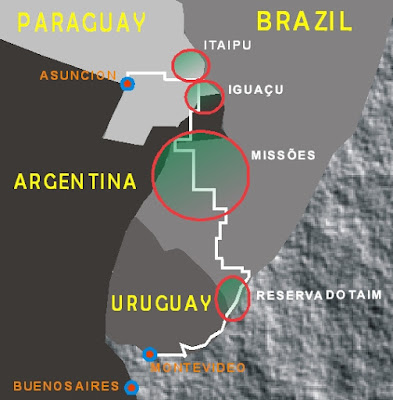
[ please note that above map has been worked-out by myself ]
The colonizationIt was only a few years after the discovery of Brazil (1500) that started the occupation and the effective colonization of these lands by the Portuguese. During the first two centuries of the colonial period, however, drawn to its vast natural resources, other European powers such as France and the Netherlands tried to found colonies in various parts of the Brazilian territory. During the sixteenth century it was also the beginning of slavery, initially that of the indigenous people and, starting from the last decades of the century, even that of some African populations, already used by the Portuguese in their mother country.
In the same century also began the first explorations of the interior of Brazil especially by the so-called
bandeirantes, expeditions from the Sao Paulo area, systematically accompanied by hostile acts and destruction against indigenous people.
Missões - MisionesConcurrently with the first colonization settlements, in the mid-sixteenth century, started the so-called "
missions", better known with the name of "
reductions".
Driven by the dream of evangelizing the indigenous people (Indians Guarani), in 1549 five members of the Order of the Society of Jesus, under the guidance of Father Manuel da Nobrega, crossed the Atlantic Ocean, just taking the direction of the north of Argentina, Paraguay and Brazil. Around the year 1630, however, the reductions suffered serious assaults to the point that at a certain point they acquired by Philip IV the formal approval to organize armed corps of indigenous people.
The decline of the reductions however was determined not so much by rumours about the alleged great wealth of the Jesuits but from the rivalry between Spanish and Portuguese (thus for political factors) that culminated in 1750 with the
Treaty of Madrid in which the territories east of the Uruguay river passed to the Portuguese domain.
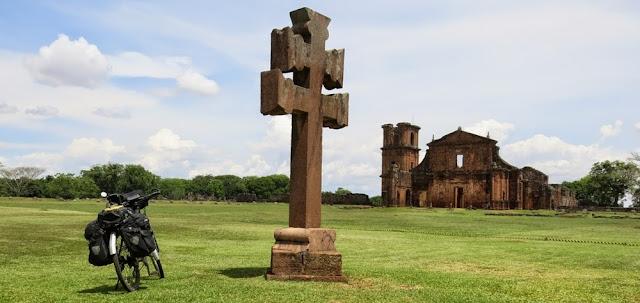 Iguaçu - Iguazu
Iguaçu - IguazuThe Iguaçu waterfalls (or Iguazu in Argentina) positioned at the confluence of Rio Iguaçu with Rio Paraná on the border between the Argentine province of Misiones and the Brazilian state of Paraná are a 275 waterfalls system with heights up to 70 meters for a total length of 2.7 km. The U-shaped
Garganta del Diablo ( "The Devil's Throat", on the Argentine side) with its 150 meters in depth and 700 meters wide, is definitely the most impressive and marks-up the border between Argentina and Brazil. The majority of the falls is located in Argentine territory, but from the Brazilian side you get a more scenic view.
 The hydroelectric power station of ITAIPU
The hydroelectric power station of ITAIPULocated on the
Paraná River on the border between Paraguay and Brazil, with 20 turbines of 700 MW each and a total installed power capacity of 14,000 MW is today the largest (operating) hydroelectric plant in the world. The dam is about 7,700 meters long and 196 high while the artificial lake covers an area of approximate 1400 square kilometers.
A long and complex history: strongly criticized because of huge involved environmental damages including the destruction of the
Water Falls of Guaíra, among the largest in the world, and the forced displacement of tens of villages of
Guarani Indios.
Not to mention eventually some pretty technical aspects such as the temporary deviation of
Rio Paraná that required since its early stages a global challenge of gigantic dimensions.
TODAY: today the Itaipu hydroelectric plant provides roughly 70% of the energy needs of Paraguay and 25% of those of Brazil.
Born from a joint-venture between the two governments (1973) its construction began in '75 whereas it started to produce only in 1984.
 THE TRIP STEP-BY-STEP
THE TRIP STEP-BY-STEP 06.11.2014: Milano - Montevideo
07.11.2014: Montevideo [UY]
08.11.2014: Montevideo [UY]
09.11.2014: Montevideo [UY] – Piriapolis [UY], 110km/H362m
10.11.2014: Piriapolis [UY] - Rochas [UY], 133km/H770m
11.11.2014: Rochas [UY] - Aguas Dulces [UY], 73km/H358m
12.11.2014: Aguas Dulces [UY] - Chuy [UY], 87km/H290m
13.11.2014: Chuì [BR]-Distrib. IPIRANGA, 120km (pullman)
13.11.2014: Distrib.IPIRANGA-Rio Grande [BR], 118km/H ---
14.11.2014: Rio Grande [BR] - Canguçù [BR], 119km/H1074m
15.11.2014: Canguçù [BR] - Caçapava do Sul [BR], 143km/H1950m
16.11.2014: Caçapava do Sul [BR] - Santa Maria [BR], 104km/H650m
17.11.2014: Santa Maria [BR] - Julho de Castilho [BR], 66km/H850m
18.11.2014: Julho de Castilho [BR]– Cruz Alta [BR], 72km/H755m
19.11.2014: Cruz Alta [BR]- Santo Angelo [BR], 88km/H1081m
20.11.2014: Santo Angelo [BR] - São Miguel das Missões [BR], 60km/H734m
21.11.2014: São Miguel das Missões [BR] – São Luis Gonzaga [BR] , 60km/H617m
22.11.2014: São Luis Gonzaga [BR]– Porto Xavier [BR], 72km/H734m
23.11.2014: Porto Xavier [BR] - Oberá [AR], 75km/H938m
24.11.2014: Oberá [AR]– Puerto Rico [AR], 114km/H1313m
25.11.2014: Puerto Rico [AR] - Eldorado [AR], 77km/H1335m
26.11.204: Eldorado [AR] -Wanda [AR], 60km/H760m
27.11.2014: Wanda [AR] – Foz do Iguaçu [BR], 80km/H756m
28.11.2014: Foz do Iguaçu & Cataratas [BR], 50km/H400m
29.11.2014: Foz do Iguaçu & Itaipù [BR], --km/H--m
30.11.2014: Foz do Iguaçu [BR] - Ciudad del Este [PY], 20km/H--m
01.12.2014: Ciudad del Este [PY] – Caaguazù [PY], 144km/H1080m
02.12.2014: Caaguazù [PY] – Caacupé [PY], 128km/H970m
03.12.2014: Caacupé [PY] – Asunción [PY] , 65km/H740m
04.12.2014: Asunción [PY]
05.12.2014: Asunción [PY]
06.12.2014: Asunción [PY]
TOTALS = L2238 km, H18517m, 30 days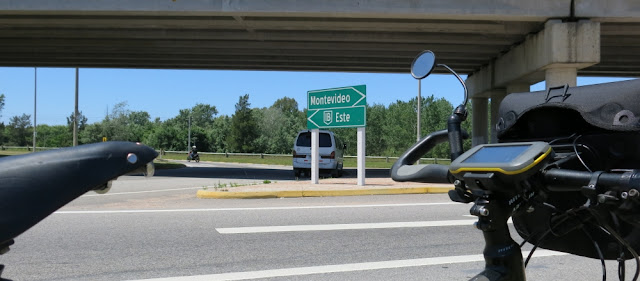
The beginning of the trip: just outside the airport of Montevideo towards the city center

Along pretty wide roads towards the center of Montevideo (Uruguay)

Parrilla uruguaya, bienvenido à Montevideo !!!

Along the Atlantic coast in Uruguay

Along the Atlantic coast in Uruguay

Along the Atlantic coast in Uruguay

The Uruguay-Brazil border

Along the
Reserva do Taim (Rio Grande do Sul-Brazil), a “fancy” friend on my way

Along the road to Rio Grande, here with Eduardo ... I'm very happy to come across with somebody on my route !!!
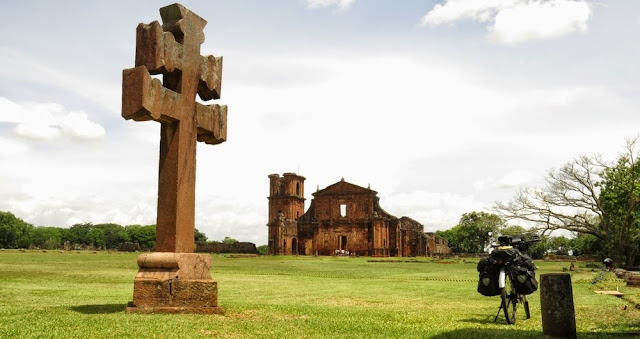
The archaeological site of
São Miguel das Missões (Brazil)

Cycling through Rio Grande do Sul (Brazil)

Some muddy bit of a track in northern Argentina

The Iguaçu-Iguazu National Park (Brazil-Argentina)

Iguaçu Falls-Iguazu (Brazil-Argentina)

Iguaçu Falls-Iguazu (Brazil-Argentina)

Iguaçu Falls-Iguazu (Brazil-Argentina)

Iguaçu Falls-Iguazu (Brazil-Argentina)

Iguaçu Falls-Iguazu (Brazil-Argentina)

Iguaçu Falls-Iguazu (Brazil-Argentina)

Iguaçu Falls-Iguazu (Brazil-Argentina)

The Itaipu hydroelectric plant on the Parana River (Brazil-Paraguay)

The Itaipu hydroelectric plant on the Parana River (Brazil-Paraguay)
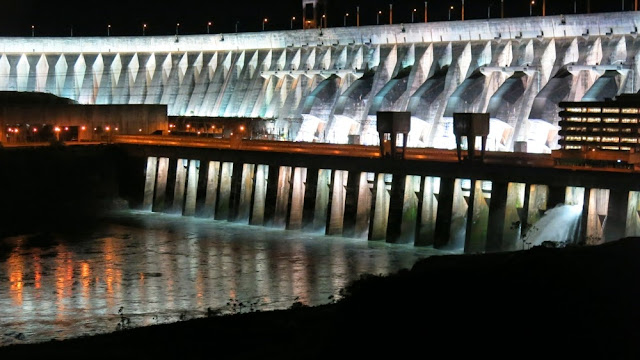
The Itaipu hydroelectric plant on the Paranà River (Brazil-Paraguay)
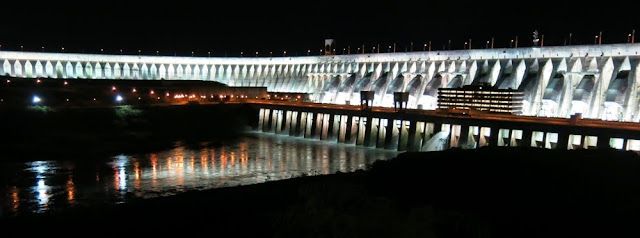
The Itaipu hydroelectric plant on the Parana River (Brazil-Paraguay)

Towards Asunción (Paraguay)

In the chaotic traffic of Asunción (Paraguay)

The building of the Government of Asunción (Paraguay)

The intricate "landscape" of Asunción (Paraguay)








